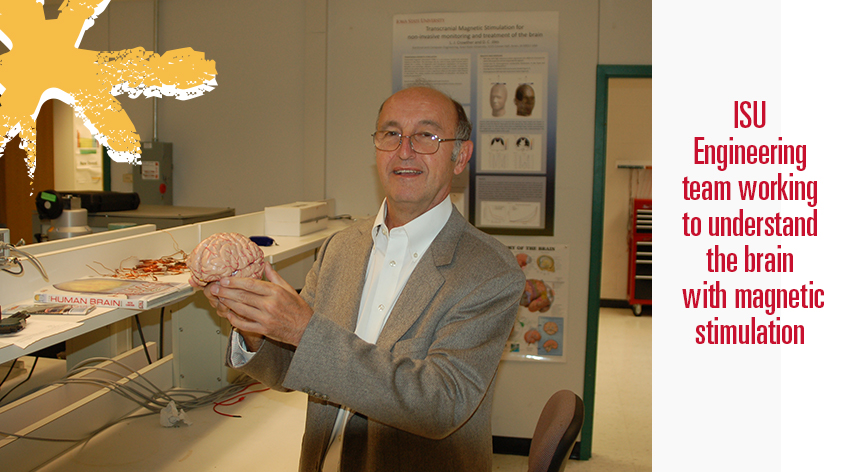 The inner workings of the brain have always been a mystery to psychologists, scientists and everyday people. Understanding brain abnormalities, such as depression or OCD, are consistently being studied worldwide.
The inner workings of the brain have always been a mystery to psychologists, scientists and everyday people. Understanding brain abnormalities, such as depression or OCD, are consistently being studied worldwide.
David Jiles, Distinguished Professor in Engineering; Long Que, associate professor in the of electrical and computer engineering; and Ian Schneider, associate professor of chemical and biological engineering are all working together at Iowa State University with the ISU Brain Initiative to learn more about brain abnormalities and how to fix them.
The ISU Brain Initiative is a relatively new organization, created in the last couple of years. The initiative contains faculty and staff from different colleges throughout ISU, including the College of Engineering, the College of Human Sciences, the College of Veterinary Medicine, the Office of the Vice President for Research and the College of Design.
Jiles, Que and Schneider recently have been working with the initiative and testing the reactions of brain neurons linked with depression and other mental illnesses. They have been testing these neurons through magnetic stimulation.
Magnetically stimulating neurons in the brain can cause neurons to self-proliferate, or rapidly increase in numbers on their own. This fast-paced increase can allow the number of neurons in a mentally ill brain to expand in numbers enough to match the amount of neurons in a brain that has no mental illnesses, specifically in cases of severe depression.
“There is a lot of clinical evidence that suggests that transcranial magnetic stimulation acts to treat depression, epilepsy or OCD,” Schneider said.
But one thing the team needs to accurately research the effects of magnetic stimulation on the brain is an environment. Que creates and builds an environment for those neurons to be observed. He has worked hard to create a chip that can hold neurons and cells, all while being durable enough to handle the magnetic stimulation.
“This chip will allow us to understand the mechanism using magnetic alteration on single neuron cells,” Que said. “We have already discovered some new phenomenons.”
The chip Que created consists of two main components. A microholder made to hold cells rests on top of a glass microchip, providing a stable environment for the cells.
After monitoring the cell division process, the team found that cells under magnetic stimulation generated more daughter cells (an identical cell formed when a cell is divided) than cells without magnetic stimulation.
“There was a change in the localization of specific proteins in the neurons after magnetic stimulation,” Schneider said.
With so many different perspectives in their team, Que, Jiles and Schneider are experiencing breakthroughs in the results they hoped for.
“One group could not do this project alone. We all have to work together, with chemical engineering and neurology,” Que said.
In the future, the team hopes to treat various neurological disorders through transcranial magnetic stimulation.
“You take the magnetic field and insert it into certain parts of the brain and it helps abnormal brain conditions,” Schneider said.
Together with the ISU Brain Initiative, the team is planning to continue furthering their research and potentially cure neurological disorders through magnetic stimulation.